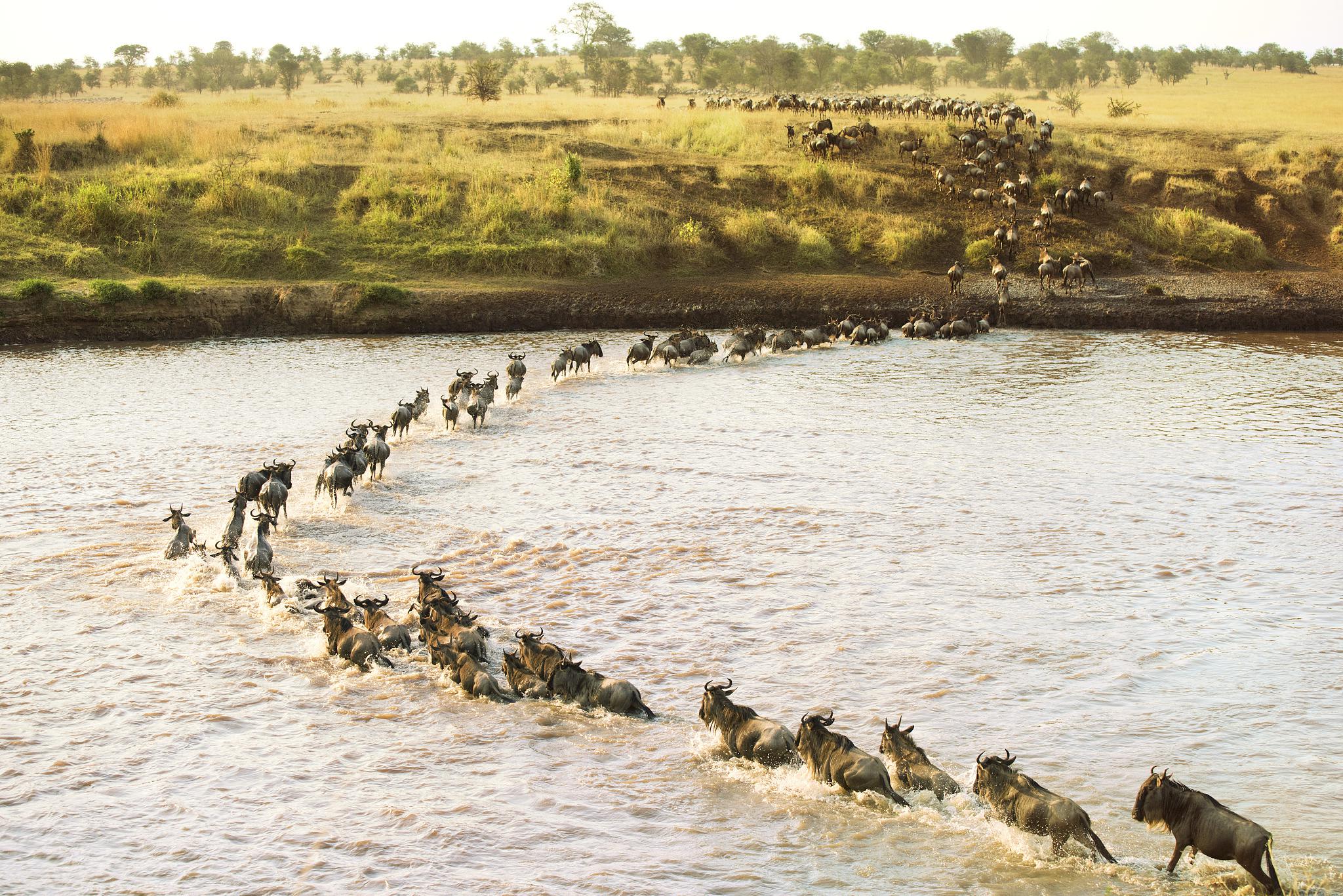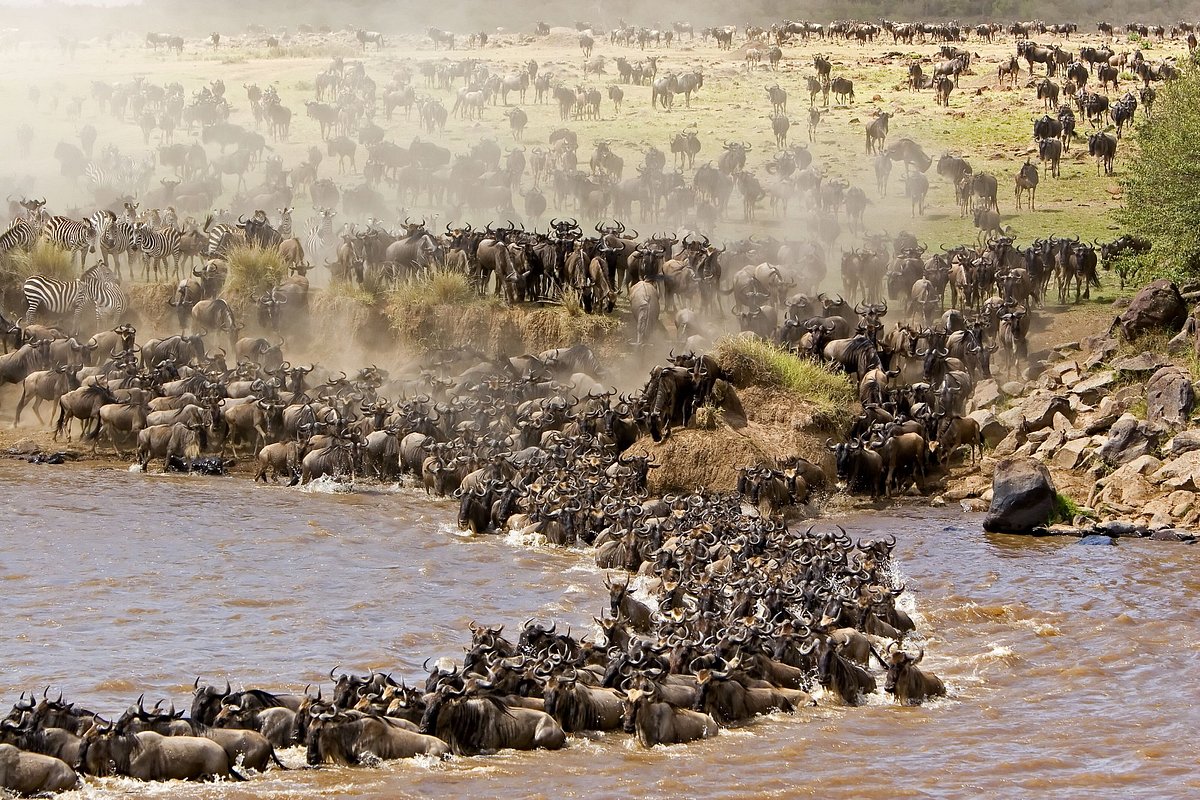
The Best Time to Visit the Serengeti in 2025
The Best Time to Visit the Serengeti in 2025. Planning a visit to the Serengeti in 2025? The Serengeti National Park, one of the most iconic wildlife destinations in Africa, promises an unforgettable experience. With its sweeping landscapes, incredible diversity of wildlife, and the world-famous Great Migration, it’s no wonder travelers flock to Tanzania to witness this natural wonder. However, choosing the right time to visit can significantly impact your safari experience. In this detailed guide, we will explore the best times to visit the Serengeti in 2025, highlighting key factors such as wildlife viewing, weather conditions, and safari options.

The Great Migration: A Year-Round Spectacle
Without a doubt, the Serengeti’s main draw is the Great Migration, an awe-inspiring event where over 1.5 million wildebeests, along with hundreds of thousands of zebras and gazelles, move across the Serengeti plains in search of fresh grazing land. This event happens year-round, but its key stages occur at different times of the year, making some periods better than others depending on what you wish to see.
January to March: The Calving Season.
As the year begins, the southern Serengeti and the Ngorongoro Conservation Area become the focal point of the migration. During January to March, thousands of wildebeests give birth in the lush grasslands, making it an exceptional time to witness the start of new life. The calving season also attracts a myriad of predators such as lions, cheetahs, and hyenas, which prey on the vulnerable newborns. Thus, this period offers incredible predator-prey interaction, a highlight for wildlife photographers and enthusiasts.
The weather during these months is relatively warm, with occasional showers that help keep the plains vibrant and green. While the chances of rain are present, they rarely disrupt game viewing. If you want to see dramatic predator action and are particularly keen on seeing young animals, this is one of the best times to visit.
April to June: The Long Rains and Northward Migration
As April approaches, the Serengeti enters its long rainy season, which lasts through May and into early June. During this period, visitor numbers are lower, and many opt to avoid the park due to the increased rainfall and muddy conditions. However, those who choose to visit during this time are rewarded with lower accommodation rates, fewer crowds, and the beginnings of the migration as the wildebeests start moving north toward the central Serengeti. The rains also bring dramatic skies and vibrant landscapes, offering a unique, more intimate Serengeti experience.
By May, the herds begin to move in larger numbers toward the central and western parts of the Serengeti, covering vast distances. The combination of the lush, green backdrop and the movement of thousands of animals is a sight to behold. Despite the rains, wildlife viewing is still possible, and many camps and lodges offer exciting game drives during this season.
July to September: Peak Season and River Crossings
Undoubtedly, July through September is considered the peak safari season in the Serengeti. The weather is dry, with minimal rainfall, and the Great Migration reaches its most famous phase – the dramatic river crossings. During these months, the herds move into the northern Serengeti and toward the Mara River, which separates the Serengeti from Kenya’s Masai Mara. Watching thousands of wildebeests plunge into the crocodile-infested waters of the Mara River, hoping to survive, is one of the most exhilarating spectacles in nature.
Since this is the dry season, wildlife is more easily spotted, as animals congregate around waterholes and rivers. Although this period offers the best game viewing opportunities, it also coincides with a surge in visitors, making the northern Serengeti and central areas quite busy. Therefore, early bookings for lodges and camps are highly recommended. The dry season also provides more comfortable conditions for game drives, with mild temperatures during the day and cooler evenings.
October to December: The Short Rains and Southward Migration
As the year comes to a close, the short rains typically arrive in late October and last through November and early December. These brief showers are far less intense than the long rains of April and May, and they breathe new life into the parched Serengeti plains. This is the time when the wildebeest herds begin their journey southward, returning to the southern Serengeti to complete the circle of migration.
While the herds start to disperse slightly during these months, wildlife viewing remains excellent. The landscape becomes greener, and the dust settles, making it a beautiful time to photograph the Serengeti’s stunning vistas. In addition, visitor numbers drop after the peak season, so you can enjoy a quieter, more relaxed safari experience. The short rains don’t significantly impact safari activities, and most camps remain open, offering a great combination of migration viewing and fewer crowds.
For travelers interested in birdwatching, this is also an ideal period. The rains bring an influx of migratory bird species, turning the Serengeti into a birder’s paradise. Whether you are watching the herds move south or enjoying the abundance of birdlife, this season offers a diverse and rewarding Serengeti safari.
Key Considerations for Your 2025 Serengeti Safari
When planning your Serengeti safari in 2025, it is essential to consider several factors. First, understand that the Serengeti experiences both a long and short rainy season. While some travelers avoid the rains, these months can offer unique experiences, such as fewer tourists, lower costs, and stunning landscapes.
Moreover, accommodations play a significant role in your Serengeti adventure. From luxury tented camps to more rustic lodges, there is something for everyone. However, availability can be limited, particularly during the peak months from July to September, so booking well in advance is crucial. Whether you prefer to stay in mobile camps that follow the migration or lodges in strategic locations, careful planning will ensure you are in the right place at the right time to witness the magic of the Serengeti.
Finally, keep in mind that the best time to visit depends on your priorities. If you want to experience the drama of the river crossings, July to September is ideal. For those interested in predator action and calving, January to March is the best period. Alternatively, if you prefer a more exclusive and intimate safari, the rainy seasons in April to May or October to November may suit you better.

Conclusion
In conclusion, the Serengeti offers something magical year-round, and 2025 will be no exception. Whether you are chasing the Great Migration, spotting predators in action, or enjoying the serene beauty of the park’s landscapes, the Serengeti promises an unforgettable experience. By understanding the seasonal dynamics and planning accordingly, you can ensure your Serengeti safari is everything you dreamed of and more.
No matter when you choose to visit, the Serengeti’s timeless beauty and diverse wildlife will leave an indelible mark on your soul. So, prepare your cameras, pack your safari gear, and get ready for the adventure of a lifetime!
Related Posts;






